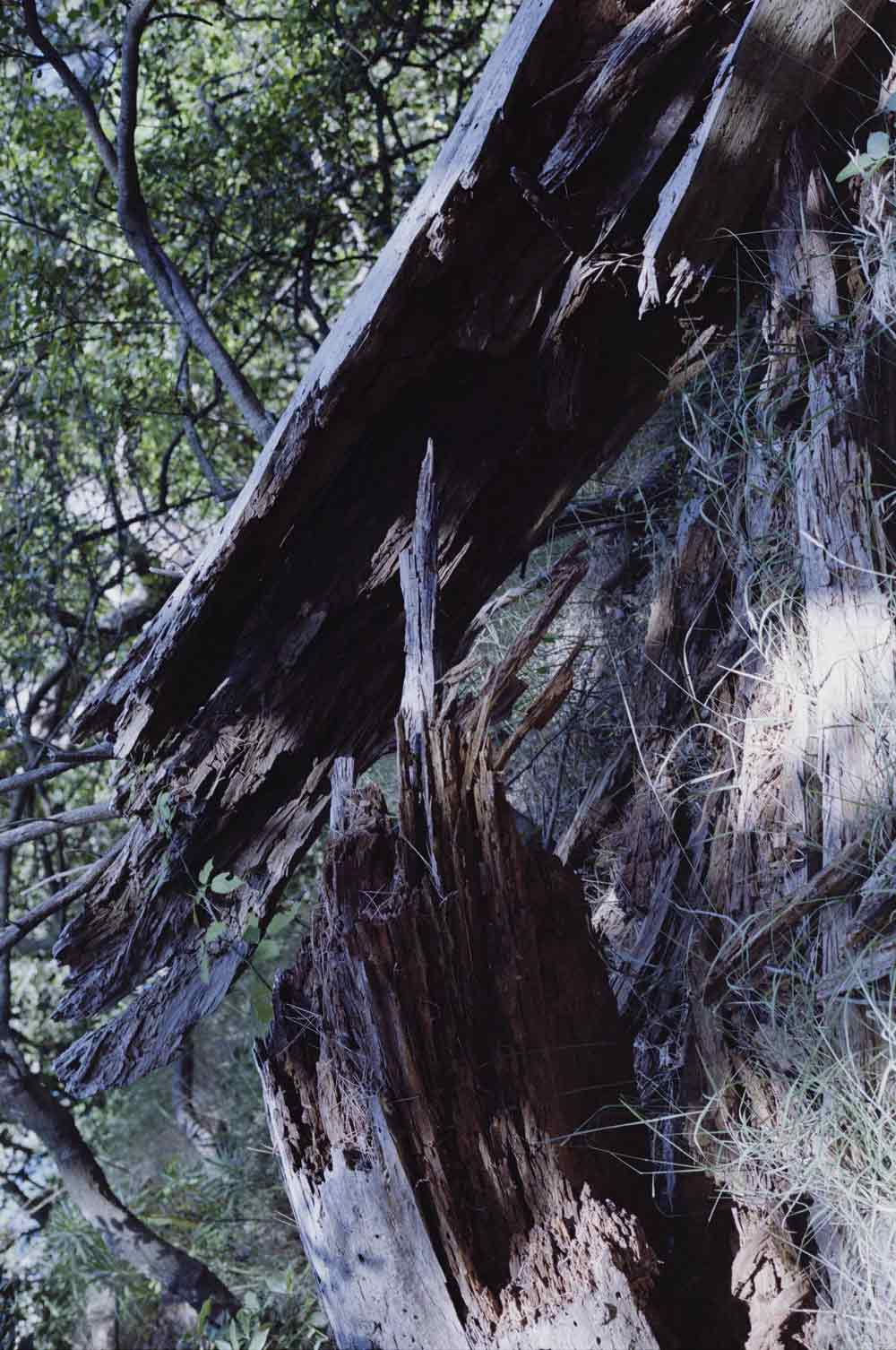Stefano Boeri, love him or loathe him, you definitely can’t ignore him: his face is without doubt at the centre of the international debate about Italian architecture. Architect, of course, but also intellectual and writer, cultural director and curator. To get straight to the point, aside from all rhetoric, not everybody knows that Stefano’s most iconic project – the Bosco Verticale (Vertical Forest) in Milan1 – is driven by principles that go way beyond mere ornamental or superficially environmentalist ambition. To reflect on the topic of urban reforestation is to awaken to the fact, once and for all, that trees, in the same way as other living beings, have the right to be on this planet and to write their story while expressing not only their point of view (punto di vista), but, as our common friend and philosopher Emanuele Coccia would say, their point of life (punto di vita). The city doesn’t belong to humans, but to all living beings. It’s a complex archipelago of mutually related, dynamic forms of life. As such, the works that architect Stefano Boeri designs together with his studio in many cities of the world are a clear invitation to make dialogue, exchange opinions and include greenness in the social fabric. Not green as a colour but as an alternative system of the world. The trees, and the animals that they attract, therefore become part of the community, they cite precedents that go from Italo Calvino to profound thoughts of ecological philosophy, and they radiate their benefits, more necessary than ever, in the urban space, to everyone’s advantage.
Your idea of forestation is taking off at planetary level and, at the same time, is maintaining a firm tie with the local dimension. How can humans give space back to nature today?
What we are trying to do is imagine a sort of dual simultaneous movement: the movement of people towards the forests and trees towards the city. The conditions for the first are apparently easier, in a state where 35 per cent of the land mass is covered by forests. This fact is substantially due to the abandonment of farming and the depopulation of the villages in rural areas. The forests have grown a lot and in a spontaneous manner. We don’t realize that a gigantic portion of the land is woodland, and so we don’t take care of it, we don’t exploit it economically. We’re not even able to judge its environmental impact. First of all, we should start taking care of it, finding out its characteristics and advantages. Natural forestry, for example, is a way to help woods to grow, also through very selective deforestation interventions, to then reap productive benefit. Instead, the other movement is substantially linked to the increase in plant-covered surface, which means increasing biological surfaces. It’s an act or gesture that opens up to a whole range of living species, not only plant species, and that gives the series of advantages we know: from absorbing fine dust, today a fundamental issue, through getting rid of CO2, to providing shade and therefore reducing heat, the obvious reduction in energy consumption, the possibility of favouring biodiversity and health factors linked to quality of life. I think that these two spheres now have to find a new form of relationship and contaminate each other.
Many of us, perhaps a little ineptly, but you tell me, imagine architects as people who dominate nature. Does an important alliance with the plant world help to change the very role of architecture or is it a natural evolution of the discipline?
I don’t know if it’s an evolution, it’s a complex question. It’s definitely not giving up the conceited ambition to govern the world which is an almost natural part of architecture and design disciplines whose task is to give a vision of the world. I think it’s a matter of trying to imagine how in its best versions this movement of flora, especially trees, which I’m particularly interested in, towards cities and buildings is a movement that tends not to be simply an ornamental or decorative gesture, as has often been the case. I think the transformative movement you’re asking me about is above all capable of giving nature the status of a user, an inhabitant who has every right to be treated according to its needs, its expectations, and also an evolutionary trajectory placed within a precise study of the individual.
Why trees and not other plant forms?
I’ve never been fascinated by nature in the broad sense, but I’ve always had a sort of obsession for trees. Trees have a more complex life, they have an immensely higher capacity to absorb the factors I was talking about earlier. It’s a form of life that is similar in many ways to our own. Trees live in an erect position, they have an individual presence in the field of life itself. They have their own names, they’re real figures.
How is the concept of Modulor2 evolving today, regarding the element of nature that we’ve been talking about?
It’s what we’ve been working on for some time, I’d say maybe the central issue in all this debate. The complication is due to the fact that the variety of tree species is incomparably greater than the variety of ethnic groups, even when considering different climatic conditions. And all these forms of life have a dimension of existence that cannot be compared to our own. When we design a façade and work with a botanist, like Laura Gatti, we start to make a selection of the species that are more suited than others to living in such precise and extremely complex conditions as those of a skyscraper in the middle of the city. We also have to account for the space between a balcony and the one above, because the space where “that beauty” grows is three dimensional. A linden tree is one thing, a holm oak or an olive tree another. A Puglian olive tree is one thing, a Ligurian one another: they are different individuals.
The type of architecture your studio is working on invites us to reflect as to the fact that cities are not born in a desert, but in an existing environment and that they don’t belong to human beings alone. A subject that again takes us back to the rhetoric on biodiversity, a topic that is becoming more and more powerful these days. Also an “easy” topic that can be stressed from all sides. Which side does your studio “stress”?
Definitely a very technical side, which also concerns the biodiversity of plant species, an issue we particularly bear in mind. Then there’s a global topic, on the biodiversity of living species, which in this moment is particularly pressing, urgent even, I might say. I think that the most beautiful thing is the whole of Édouard Glissant’s evolution of the concepts of créolité (Creoleness) and mondialité (worldliness). Naturally, the architect and town planner’s job is to create the conditions to try to foster certain processes. It’s very difficult but very interesting, it’s always a challenge. We design the mould so that the things then come to life. It’s all about imagining a situation where there’s a balance between the principle of community, group, ethic group or cultural identity and the exchange principle, in the sense of the ability to look at oneself through other people’s eyes, that is, a balance between bonding social capital and bridging social capital (to use Hilary Putnam’s words). You have to define the spaces without forgetting that there’s a necessary request for identity and at the same time you have to think of the right dimension so that the identity doesn’t overwhelm the possibilities of exchange, interaction and social mobility. In a certain sense, this challenge is linked to the concept of biodiversity. It’s definitely the heart of the research activities of my studio in Italy, China and Albania. It’s not very different from what happens in the forests, where some species have to come together as clusters or aggregates in order to survive. It’s the net.
For you the Vertical Forest was a turning point, a fundamental breaking point.
Yes, definitely. Obviously, it’s a type of active manifesto, which carries on talking, regardless. When I was the director of Domus in 2005 I dealt with the topic of doubling places. In one article that I’d called “Superluoghi” (Superplaces), I wrote that there are now places in the world with a dual nature. There’s the coagulation of stone, steel or glass which exists in that place, and then there’s the media simulacrum which builds the magazines. The simulacrum is incredibly powerful, it doesn’t age, it’s completely detached from the building itself. In a certain sense, after studying it, I live this dynamic in the first person. Also in the case of the Vertical Forest, for example, the life of the object has a certain and relative autonomy from the life of the simulacrum and the two spheres carry on dialoguing with each other. The interesting thing is that at times it becomes a middling object once more, in the literal sense of being in the middle (it happens in autumn and winter, often, when the plants rest). In mid October, it becomes lower, it becomes an element in an ordinary city and then in spring it’s revitalized. It’s a life cycle that gets stronger year on year.
In effect, it’s uncontrollable architecture, as if you’d created an architectural algorithm.
It always happens in architecture, but … let’s say that here the risk’s bigger. No one knows what’ll happen in the future. At times I wake up at night and wonder what’ll happen to the roots, it’s my obsession.
I think that’s its true strength, that there’s no predicting what the façade will be like next year.
You’re right. It’s a crossover of species that goes beyond the single tree, there are so many balances that you have to build every time when you do this type of thing. Like everything in nature, you can’t control how to capture lots of these spectral balances and so they’re marvellous and terrible. At present, me and my closest partners are researching and applying the urban forestation model to social building projects which shun the criticism against Milan’s Vertical Forest as a luxury building model. Another Vertical Forest that we’re building in Eindhoven, in Holland, which should be ready next December, will work like this: but we’re also making two in China by interpreting this same social model. Somehow, I think that the Vertical Forest has changed the standard criteria for evaluating architecture, it’s interpreted and consolidated a shared feeling, crossing the gap between nature and culture once and for all. It’s as if I’d set a different bar, a different point of comparison. Whatever it’ll mean in the future, I’m happy.
1The Bosco Verticale is the first prototype of urban reforestation, designed by Studio Boeri Architetti in the Porta Nuova district of Milan. Finished in 2014, the residential building is the model for a new architecture of biodiversity in which vegetation plays an essential role. “A house for trees that also hosts humans and birds”.
2 The Modulor is a scale of measurement developed in the middle of the last century by Le Corbusier. It’s based on the proportions of the human body, continuing the theories of the Vitruvian man by Leonardo da Vinci, in turn inspired by the studies of Vitruvius.

